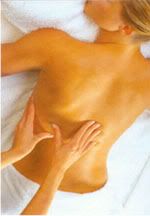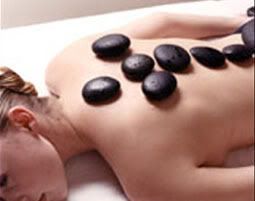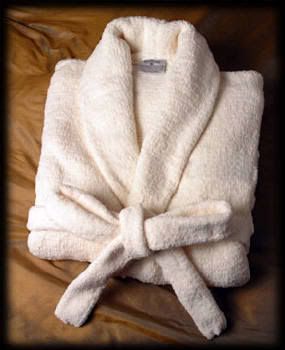Massage 101
 Last year, I lost my massage virginity. I always wondered why a massage was such a big deal, but didn't want to spend, what I perceived, a lot of money for thirty minutes of relaxation. It was on a spa-themed vacation with friends that finally changed my mind. My first thoughts upon emerging from the room post-massage, was "I can't believe I've been missing out on this!"
Last year, I lost my massage virginity. I always wondered why a massage was such a big deal, but didn't want to spend, what I perceived, a lot of money for thirty minutes of relaxation. It was on a spa-themed vacation with friends that finally changed my mind. My first thoughts upon emerging from the room post-massage, was "I can't believe I've been missing out on this!"Most salons and independent practioners offer at least four standard massage techniques: the Swedish massage, the Deep Tissue massage, the Hot/Cold stone massage, and the Sports massage.
The Swedish massage is designed as an overall body massage to increase circulation and blood flow. It utilizes long, flowing strokes, to relax and energize the body. Swedish massage is a good beginner-level massage.
Deep Tissue massage focuses on deeper layers of muscle tissue, working a specific joint, muscle or muscle group. The massage practioner accesses deeper layers of tissue in order to release chronic patterns of tension in the body. Deep finger pressure is applied to areas of muscle tightness, and releases the contraction with slow strokes. Deep tissue is beneficial for muscle damage from an injury like back strain.
 A Hot/Cold stone massage allows the massage practitioner to work deep into the muscle without the discomfort of a regular deep tissue massage. Smooth hot or cold stones, usually basalt or marble, are used to massage the body. Heated stones allow muscles to relax, while cold stones target specific areas like the sinuses.
A Hot/Cold stone massage allows the massage practitioner to work deep into the muscle without the discomfort of a regular deep tissue massage. Smooth hot or cold stones, usually basalt or marble, are used to massage the body. Heated stones allow muscles to relax, while cold stones target specific areas like the sinuses.Sports massage is therapy to help prevent athletic injury, keep the body flexible, and heal the body from injury. It's a system of long strokes, kneading and friction techniques on the more superficial layers of the muscles, combined with active and passive movement of the joints. Sports massage can be tailored to focus on muscle systems relevant to a particular sport.
When you decide which type of massage you'd like, your next step is to find a massage therapist. Spas and health clubs are a great place to start, as they're massage staff should be reputable and licensed. Ask your friends, and even your stylist, for recommendations. If you decide to go with an independent practitioner, thoroughly verify their credentials. I recommend choosing a massage therapist employed by a spa, for many reasons. While an independent practitioner that makes home visits may be convenient, a spa surrounding is safer, and you're more likely to be free of distraction. Visit this website to find a massage therapist in your area meeting American Massage Therapy Association's requirements.
In preparation for your massage, drink lots of water and eat a light meal. Massage therapy aims to rid your body of internal toxins, and during the process, you may become dehydrated. Trust me on this one---you need to go into your massage hydrated. In addition, it's best to have a little food on your stomach, but don't overload on the portion or rich foods that may cause gastrointestinal issues. If you find your body making an embarrassing noise during your massage, rest assured that massage therapists hear it all the time.
 Arrive to your massage appointment ten-to-15 minutes ahead of time, allowing time to fill out any paperwork and to prepare yourself mentally. Many massage therapists or spas schedule their massage clients back-to-back, and do not accommodate tardiness. In addition, if you arrive in a frenzy, you may cheat yourself of the time to wind down for the massage. If you have to cancel your appointment, let the massage therapist or spa know as soon as possible. Most require a 24 hour notice, and you may be subject to a fee if you cancel later.
Arrive to your massage appointment ten-to-15 minutes ahead of time, allowing time to fill out any paperwork and to prepare yourself mentally. Many massage therapists or spas schedule their massage clients back-to-back, and do not accommodate tardiness. In addition, if you arrive in a frenzy, you may cheat yourself of the time to wind down for the massage. If you have to cancel your appointment, let the massage therapist or spa know as soon as possible. Most require a 24 hour notice, and you may be subject to a fee if you cancel later.Before your session begins, the therapist will ask you some questions about your medical history, stress level, any problem areas, and your expectations for the massage. The therapist will also ask you if you'd like extra attention or avoidance of any areas, as well as the amount of pressure they should apply. This is the time to speak-up. Good communication is essential to a postive massage experience, and it is important for you to be as comfortable as possible.
Preceding the massage, the therapist will ask you to remove your clothing to your level of comfort. If you are concerned about your body and its lumps and bumps, remember that massage therapists see an array of different body types. Your cellulite will fail to shock them. Sheets and/or towels, referred to as "drapes," are provided and will be used by the therapist to preserve your modesty. You may keep clothing on during the massage, but be aware that it may hinder the therapist's ability to maximize the relaxation.
The therapist will leave the room for you to undress, and during this time, you need to position yourself facedown on the massage table or bed. Many tables have extra attachments or cushions, like a face rest, but in the case that they don't, position yourself comfortably with your head to the side. The therapist will re-enter the room, and begin the massage, uncovering only the part of the body being massaged at a time. Know that the therapist will ask you to turn over for the second half of the session, and will arrange the drapes to accommodate your modesty.
 Once the massage begins, the therapist will ask you if the pressure is too hard or too soft. The therapist also may offer some advice to improve the quality of the massage, such as breathing techniques. The therapist will use an oil or lotion, reducing the drag on the skin while performing the massage strokes.
Once the massage begins, the therapist will ask you if the pressure is too hard or too soft. The therapist also may offer some advice to improve the quality of the massage, such as breathing techniques. The therapist will use an oil or lotion, reducing the drag on the skin while performing the massage strokes.The ambience in the massage room shold be peaceful and comfortable. Many times, the room will be dimly lit and fragranced by scented candles. The therapist also may play music during the massage. If you prefer the room to be quiet, then ask to turn the music off. Your massage therapist will default to silence during your session, but if he or she strikes up a conversation and you'd like peace, respectfully ask for silence.
A relaxed state is key to making the most of your massage. If your mind is racing and you are unable to focus, try closing your eyes and follow the hands of the massage therapist and how the touch feels. It also may be beneficial to "nap" during your massage.
Don't hesitate to report any discomfort during the massage. If there is anything that doesn't feel comfortable or if you don't like something, you have the right to ask the therapist to stop. If you deem that the therapist's behavior is inappropriate, you reserve the right to end the session at any time. Inform the spa owner if you were made uncomfortable by a massage experience.
A massage session will last anywhere from 30 to 90 minutes. After the massage is finished, the therapist will leave the room to allow you time to dress. At this point, you can proceed directly to the lobby area to pay for the massage. You should tip your massage therapist 15 to 20 percent, or more if you are satisfied. Most spas allow their patrons to arrange for the therapist's tip during checkout.
Be sure to drink extra water after a massage, allowing your body to replenish liquids. Do NOT consume alcoholic beverages for several hours after your massage, or you'll be drunk as a skunk in no time flat. Allow yourself some quiet time after your session ends to re-engage your busy schedule. Some therapists even recommend a light nap after a massage session.
Massage has its greatest benefits over time, and repeated sessions will allow patterns of stress to release. I warn you though--once you start, you'll be back for more!


<< Home